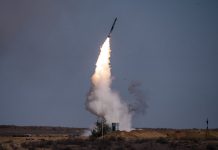By: Neeraj Rajput
“India doesn’t send commandos to foreign countries to eliminate enemies; there are already people who are always ready to work for us for whatever the reasons or lure,” reveals an ex-spy who has long worked for India’s ‘dreaded’ intelligence agency RAW (Research and Analysis Wing).
There are reasons for RAW to be termed ‘dreaded’ after a series of suspicious deaths and killings of terrorists, separatists, and enemies who had long been involved in anti-India activities or responsible for unrest in India in some way or other. “See the list and count the numbers of such killings (or attempts), right from Pakistan to the UK, Canada, and even the US,” the ex-spy told EurAsian Times on the condition of anonymity.
Hardeep Singh Nijjar, Canada-based chief of the banned Khalistan Tiger Force (KTF), was shot dead outside a gurdwara in British Columbia (Canada) on June 19. Canadian law enforcement authorities are yet to arrest the perpetrators.
Canada has been in the news since recently for organizing Khalistan-related anti-India rallies. KTF has long been a votary of Khalistan, a separate nation on the basis of religion (Sikhism) to be carved out from India’s Punjab state (province). Punjab had suffered home-grown insurgency and Pakistan-sponsored terrorism for almost two decades, from the early 80s until the 90s.
Another Khalistan supporter and Chief of the banned Khalistan Liberation Force, Avtar Singh Khanda, died due to suspected poisoning in a hospital in UK’s Birmingham on June 16.
Known in the files of intelligence agencies as a ‘bomb expert,’ he was responsible for attacking and removing the tricolor from the Indian High Commission complex in London.
But what caused a flurry in the world of espionage and assassination when a Khalistani terrorist and chief of the banned Khalistan Commando Force, Paramjit Singh Panjwar, was shot dead in Pakistan on May 6 this year.
Does it mean RAW also has deep assets in enemy countries that an inimical element is being neutralized in sensational daylight murder?
“These are not normal deaths or law and order issues,” says Ex RAW officer R K Yadav speaking to EurAsian Times. “But don’t ask much; such things are not talked about in media,” Yadav, who is vocal on issues related to the Indian intelligence apparatus and has even authored a book ‘Mission RAW,’ was quick to add.
“I can only say that NSA Ajit Doval is not a person who can sit quietly watching the Indian flag being taken down from the Indian High Commission premises in London,” Yadav added.
Earlier this year, on March 19, some pro-Khalistani people had attempted to take down the Indian tricolor from the High Commission premises in London and had tried to put the yellow flag of the Khalistani movement there. But Indian security personnel posted at the High Commission thwarted the Khalistani supporter.
India’s premier investigating agency, NIA (National Investigation Agency), has registered a criminal complaint under relevant sections of the Indian Penal Code, the Unlawful Activities (Prevention) Act, and the Prevention of Damage to Public Property Act in this incident. NIA also released CCTV footage of the incident to identify people involved in the attack on the High Commission.
Khanda was among three accused who were named as the mastermind by NIA in the FIR (First Information Report) regarding the attack on the High Commission and had sought information about the accused from the public.
Exactly two days after naming him, Khanda was found dead due to unknown causes in a UK hospital. Some media reports suggested Khanda died due to poisoning, while some said he had blood cancer.
There has been no official word on these killings and suspicious deaths–for that matter, in the history of spying and espionage, such confirmation never comes from ‘official channels.’
But what has caught everybody’s fancy is the new age avatar of Indian spy agencies who, like Israel’s Mossad or CIA (US intelligence agency), have been eliminating enemies like Hollywood movies or some James Bond flicks.
Another such news (though later turned out to be fake) that made Indians jubilant was the alleged elimination of another bete-noire, US-based Gurpatwant Singh Pannu, in a ‘road accident’ in California.
Pannu has been running a banned outfit, ‘Sikhs For Justice’ overseas, in support of Khalistan for the past couple of years. Pictures of a road accident on a California highway with a truck rammed into a car had also gone viral, claiming Pannu had been hit. But Pannu himself emerged on social media with a video message countering the news as incorrect (or he had escaped in the accident).

New Government, New Policies
India had not even retaliated against one of the worst terror attacks on the country, the 26/11, on the commercial capital Mumbai in 2008, even though it was clear that terrorist organizations and functionaries were operating from Pakistani soil.
Not much was done or heard about any counterattack or covert operation by the ‘Crack Team’ of Indian intelligence agencies. So what exactly has changed?
“What do you think…Indian agencies didn’t have such capability (of cover operations) earlier. Of Course, it was there. What has changed now is the emergence of India as a powerful nation and go-ahead from the Government in power”, explains Former RAW officer N K Sood while speaking to EurAsian Times.
“There was a time when even the phone call from the US Ambassador to our (Indian) Prime Minister had reversed major decisions which were much needed or desired as a nation-state,” says Sood. “But see now, there has been jostling among US Congressmen to take autographs of our PM (Narendra Modi),” quips Sood on the recent state visit of PM Modi to America and his address at the US Congress.
But Khalistani separatists and terrorists are not the only ones on the ‘hit list.’ Those responsible for terrorism and unrest in India’s Jammu and Kashmir and even involved in plane hijackings as old as ’85, let alone IC-814, have been neutralized in the past year or so.
Last year in March (2022), Zahoor Mistry, who was involved in the infamous IC-814 hijacking of an Indian Airlines plane from Kathmandu airport (1999), was shot dead in Karachi by unknown gunmen.
NSA Doval was then the Joint Director of the Intelligence Bureau (IB), the internal intelligence agency of India.
The hijacking had not only exposed the fault lines in the Indian security system but also the weakness of the then Government by releasing three dreaded terrorists from the Indian jails in lieu of releasing the plane and the passengers.
Another wanted person Ripudaman Singh Malik, who was involved in the 1985 Air India bombing, was shot dead in Surrey (UK) in July last year.
Harvinder Singh Sandhu, accused of the 2021 RPG attack on the Punjab police HQ in Mohali, died of a drug overdose at a hospital in Pakistan. Bashir Ahmad Peer, Hizbul Mujahideen (HM) Commander, was shot dead in the Rawalpindi area of Pakistan on February 20 this year.
Bashir Ahmed was a native of the Kupwara area of Indian J&K and was responsible for operations of banned HM in Pakistan, including arranging the training of newly recruited terrorists as well as cross-over on LoC (Line of Control) to the Indian side.
Syed Khalid Raza, Commander of another banned terrorist organization Al Badr was shot dead outside his house in Karachi on February 27 this year. The list is long and even includes ‘hits’ in neighboring Nepal too.
“India can do such covert operations because now we wield more power in the world, more than even the UK and Canada,” says Sood, who had long served ‘Pakistan desk’ during his career in RAW.
“India is now dictating terms and doesn’t need to fire a bullet to eliminate its enemies ruthlessly,” Sood adds.
- Neeraj Rajput is a Senior War-journalist with more than two decades of multimedia experience in defense, conflict, security, strategic affairs & geopolitics.
- Please mail us at etdesk (at) eurasiantimes.com
- The author tweets at @neeraj_rajput




